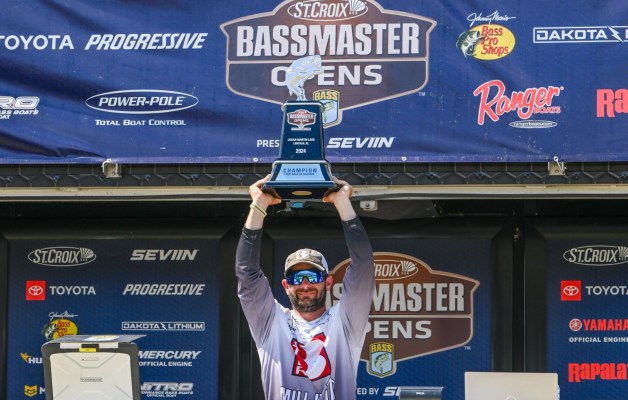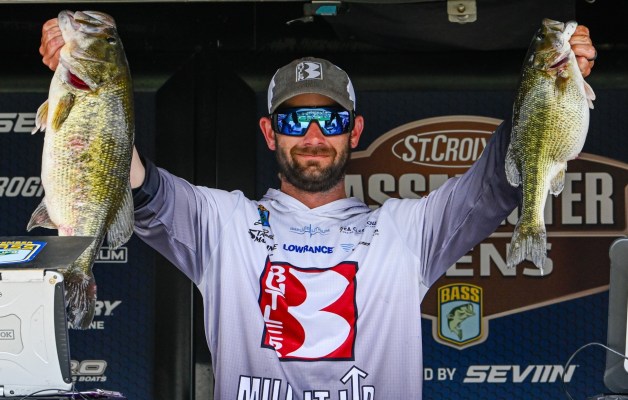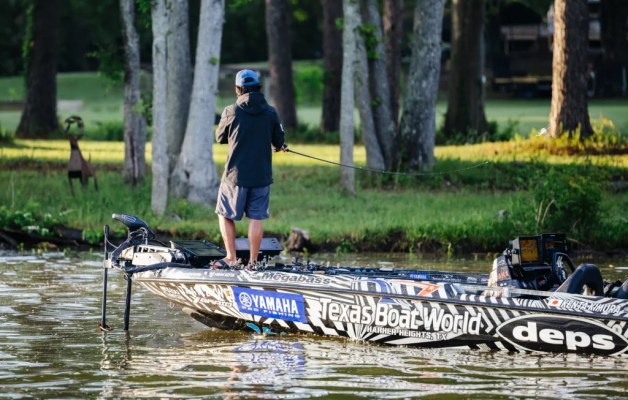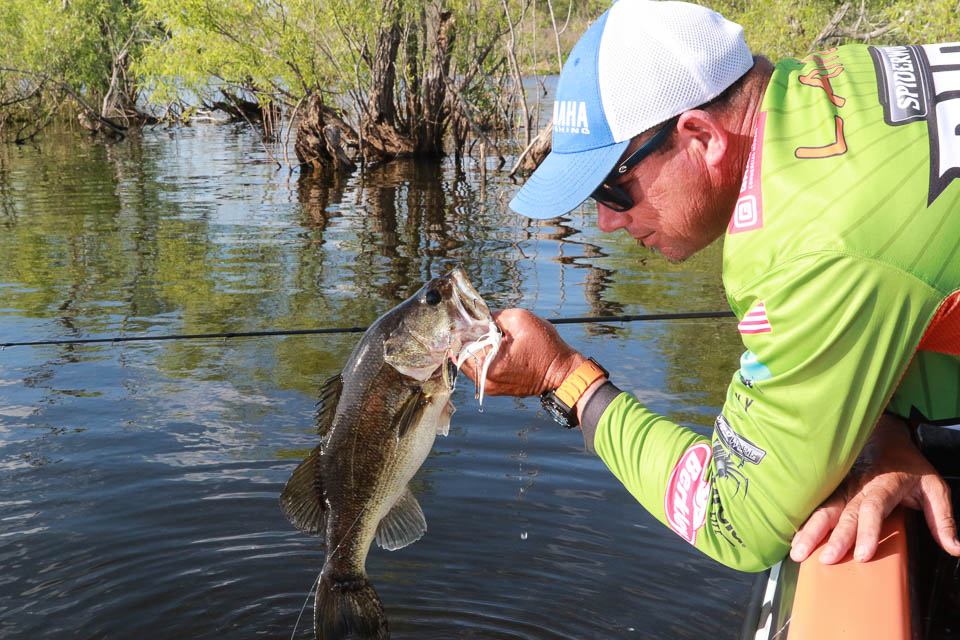
The thing about extremes is that their self-imposed limitations can impede consistency. That’s particularly true for anglers that let their specialty turn a race horse into a one-trick pony.
Not so for St. Croix Bassmaster Opens EQ angler Bobby Lane, who long ago validated his “Big Fish” nickname for catching lunker largemouth on the Bassmaster Elite Series.
Despite his well-earned nickname, the decorated pro from Lakeland, Fla. has no problem downsizing, downshifting and trusting a smaller deal to deliver the same big results.
We’ll get to that in a moment, but first, a little scene setting.
Having fished the Bassmaster Elite Series from 2008 to 2018, Lane’s pursuing a return to bass fishing’s highest level through the Opens Elite Qualifer (EQ) format. Early in his first Elite years, Lane earned his nickname after a run of quality catches.
“For two or three years in a row, I won the won the big fish award multiple times in Elite tournaments and (Bassmaster Emcee) Dave Mercer started calling me that,” Lane said.
Describing the mindset behind the nickname, he said: “You must fish for them, No. 1. If you’re going to flip a jig, you must keep a jig in your hand all day when you’re looking for big ones.
“Big ones also love topwater plugs and even though not a lot of people throw them all the time, I tend to throw them different times than most people.”
Lane is a big fan of the Berkley Cane Walker 125 for topwater duties. Conversely, when he’s using a jig, it’s usually the Berkley Flipping Jig with a Berkley Meaty Chunk trailer. Elsewhere, Lane spends a lot of time punching a Berkley Creature Hog on a 4/0 Fusion19 hook with a 1 1/2- to 2-ounce Epic Tungsten weight.
Add to this a Berkley Slobberknocker bladed jig with a Berkley Power Stinger trailer, and Lane’s loaded for bear. Then again, sometimes, a lighter round gets the job done.
Downsizing lure choices
While Lane’s not the sport’s foremost finesse plastics fisherman, he does a ton of work with the Berkley PowerBait MaxScent The General, either wacky or unweighted Texas rigged. Beyond that, he shared a trio of bait choices that take a strategic downsizing path.
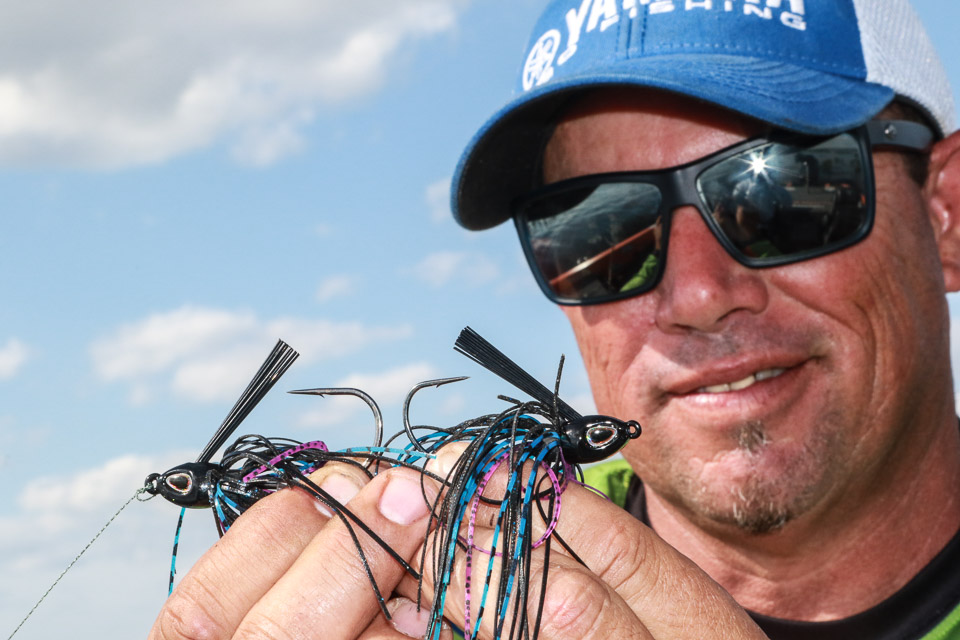
Berkley Finesse Swim Jig: A near replica of the standard Berkley Swim Jig, which sports a Berkley PowerBait silicone skirt, 3D eyes and 0-degree recessed vertical line tie, the finesse version simply varies the hardware. Compared to the beefy hook built into the all-terrain full-size model, the finesse version’s thinner diameter Fusion19 hook plays a different role.
Pairing the Finesse Swim Jig with a Berkley Grass Pig, Lane bypasses the gnarly vegetation for which standard swim jigs are known and instead, fishes this package around anything from floating docks to deep bluff walls. Noting that this lighter model excels for open water smallmouth and shad spawns, he stressed that, while the full-sized swim jig rides with braid, he fishes the finesse model on 15- to 20-pound Berkley 100% Fluorocarbon.
“You don’t need to use braid and heavy tackle to swim this jig through the scenarios it’s made for,” Lane said. “If you’re throwing to shallow targets, you want the hook to work in your favor.
“If you skip one up under a dock or a laydown and a fish grabs it immediately and your hookset is a little off, that needlepoint Fusion19 hook is more forgiving. By comparison, when you throw a heavy cover swim jig in thick grass, when one eats it, you really have to pile drive that hook to dig it through there.”
Taking the finesse concept a step farther, Lane will trim his swim jig’s skirt and shorten his trailer when he needs a smaller profile to convince indecisive fish.
“When I think of finesse, I think of fish that get overlooked,” Lane said. “With that (low visibility) fluorocarbon and the smaller hook presentation, you can go behind people and still catch fish.”
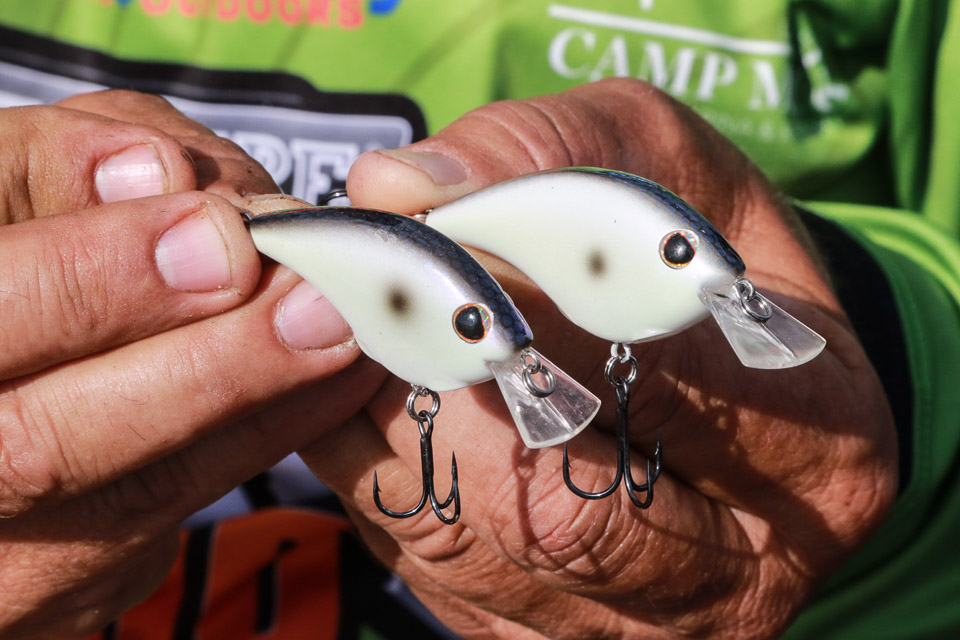
Berkley Frittside 5 Jr.: While he finds plenty of use for the original 2 1/4-inch, 1/3-ounce Frittside 5, Lane reaches for the 2-inch, 1/4-ounce version of this flat-sided crankbait when he needs to mimic smaller forage.
“It’s strictly a match-the-hatch strategy when they get on that really small baitfish,” Lane said. “You see them coming up everywhere and you throw spinnerbaits, bladed jigs and all kinds of stuff to them and they will not touch it. But anywhere I go in the country from Florida, to South Carolina, to New York, they eat that bait.
“And it’s not like you’re throwing that little bait to catch a limit. I’ve caught 5- and 6-pounders on it.”
Two of Lane’s favorite times for the Frittside 5 Jr. are after a shad spawn when juvenile baits are everywhere and, then in the fall when the smaller baits move into the backs of pockets. He mostly throws this bait on 12-pound Berkley 100% Fluorocarbon, but in tighter quarters where he needs a little more precision with the smaller bait, he’ll fish it on a spinning outfit with 10-pound Spiderwire DuraBraid and a 10-pound fluorocarbon leader.
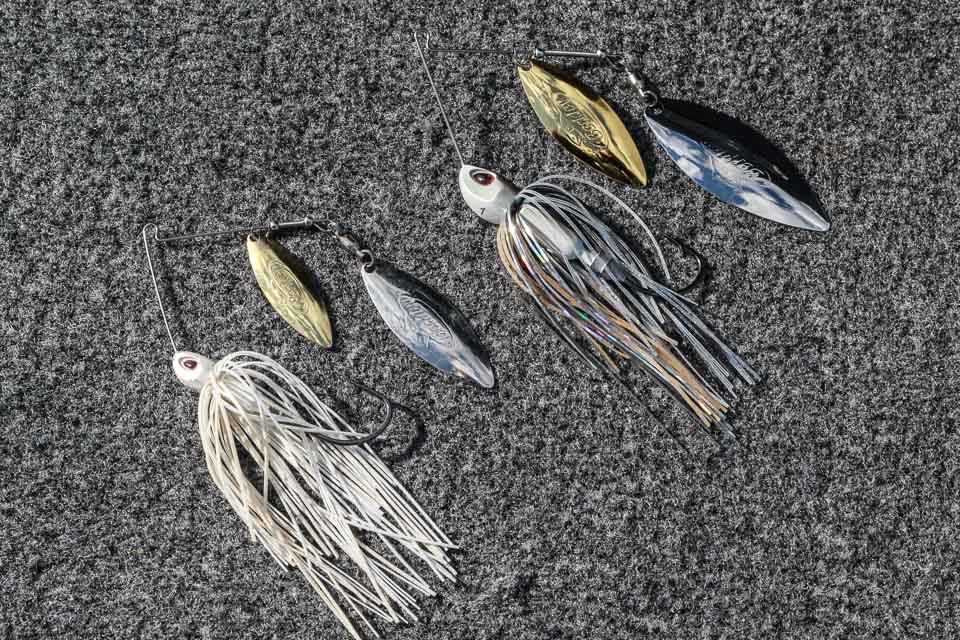
Berkley Power Blade Compact Spinnerbait: A full-size 3/8-ounce double willow-leaf spinnerbait gets the job done in many scenarios, but when blustery conditions put too much drag on standard size willow-leaf blades, Lane switches to a Berkley Power Blade Compact Spinnerbait. This allows him to take advantage of the same weight, but a tighter profile, with smaller, more aerodynamic blades.
Also, when that small baitfish scenario arises, downsizing blades does a better job of mimicking the minute meals. Experience often guides Lane’s decisions, but he’s always looking for fish feedback.
“Early in the year, when you get a shad kill, the little ones die first,” Lane said. “You throw a big spinnerbait and you catch one or two, but you put a little one on and it just makes your life so much easier.
“When I catch a fish, I always pay attention to where it has the bait. I’ve seen so many times when I’m throwing a (full size) spinnerbait and I’ll catch a fish that’s hooked in the corner or the mouth or toward the lip. Then I’ll put a smaller blade on and they start eating that one, and they have it down in their mouth.”
Because those smaller blades drag less water, Lane throttles back on the retrieve to keep the bait from blowing out. That small adjustment, he said, is well worth the benefit.
“With all the pressure on the fisheries these days, going to a smaller bait can give you the few extra fish that you need.”

